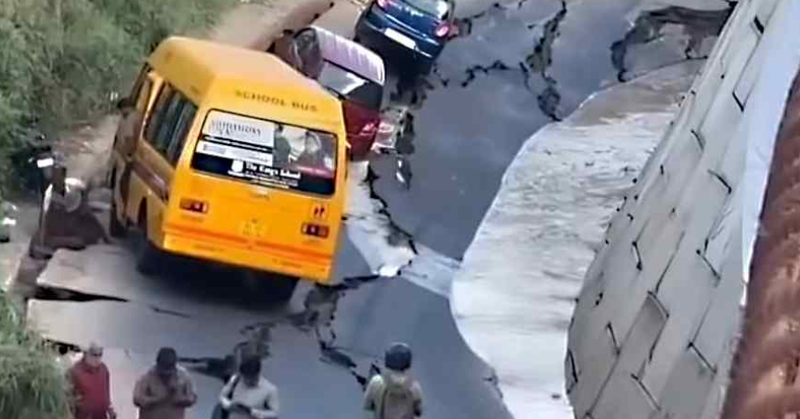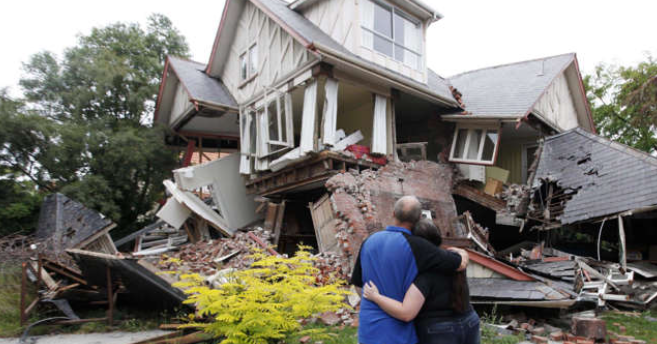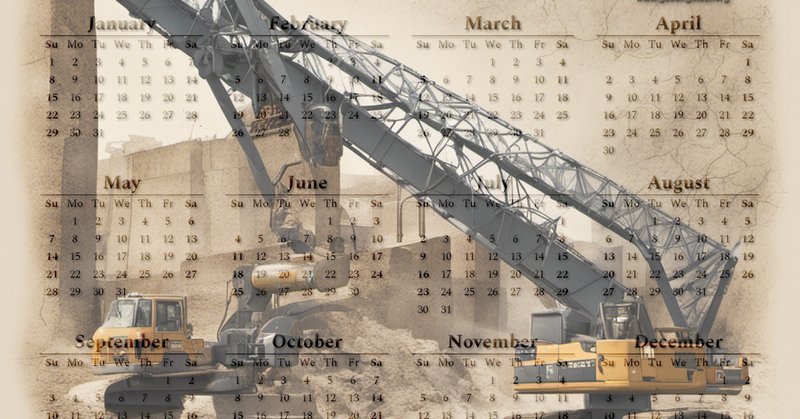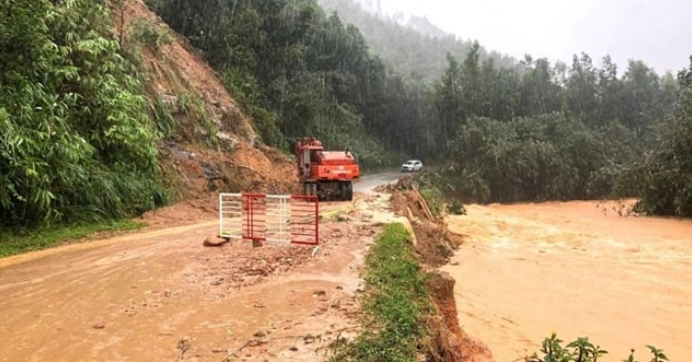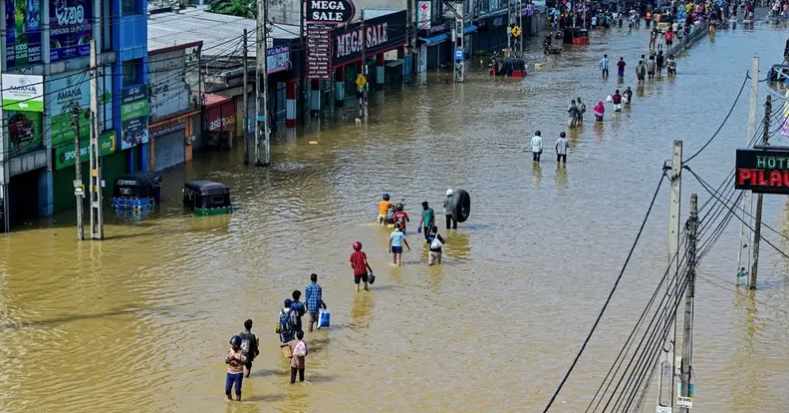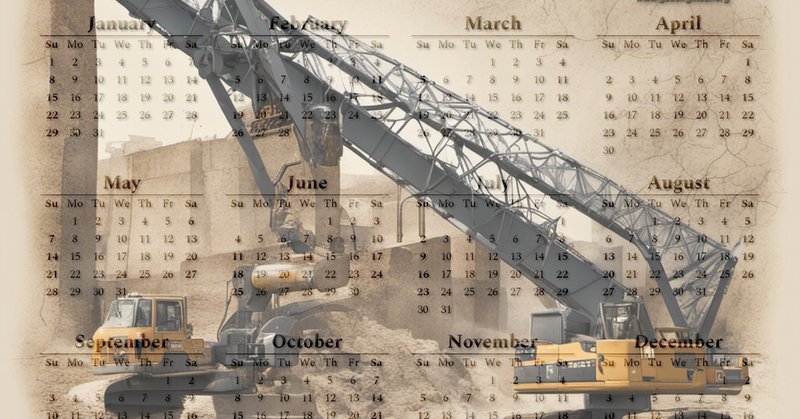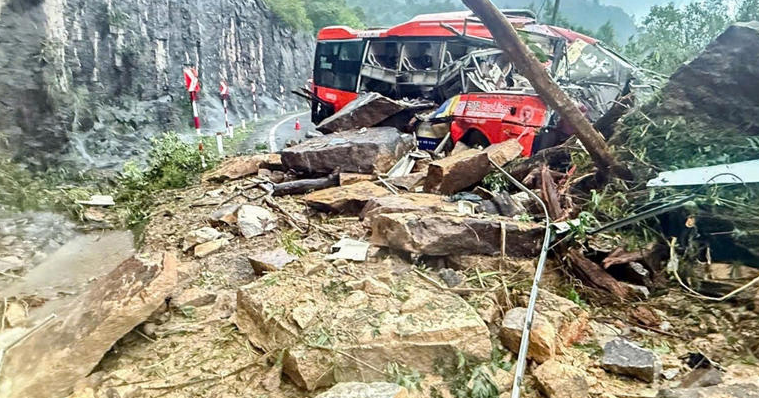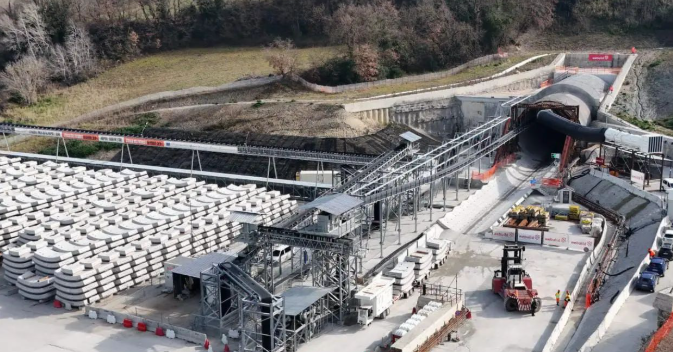
Geoengineer.org
@GeoengineerOrg
Followers
4K
Following
99
Media
969
Statuses
6K
Official twitter page of The International Information Center for #Geoprofessionals providing an abundance of #geotechnical news & resources!
Joined December 2011
A newly built embankment along National Highway 66 at Mylakkadu in Kollam collapsed without warning, trapping several vehicles, including a school bus, and causing deep ground fissures across the service road.
geoengineer.org
A newly built embankment along National Highway 66 at Mylakkadu in Kollam collapsed without warning, trapping several vehicles, including a school bus, and caus...
0
0
0
A magnitude 7.0 earthquake struck near Yakutat, Alaska, triggering more than 160 aftershocks within 24 hours and generating widespread ground shaking across southeastern Alaska and parts of Canada.
geoengineer.org
A magnitude 7.0 earthquake struck near Yakutat, Alaska, triggering more than 160 aftershocks within 24 hours and generating widespread ground shaking across sou...
0
0
0
On this day in 1870: Thomas Brassey died. Thomas Brassey was an English civil engineering contractor and manufacturer of building materials who was responsible for building much of the world's railways in the 19th century. By 1847, he had built about...
geoengineer.org
A timeline of Civil Engineering events occurred on this day.
0
0
0
Vietnam has experienced one of its most severe sequences of rainfall-induced hazards in decades, with prolonged storms triggering extensive flooding and more than a dozen landslides across Lam Dong province.
geoengineer.org
Vietnam has experienced one of its most severe sequences of rainfall-induced hazards in decades, with prolonged storms triggering extensive flooding and more th...
0
0
0
On this day in 1894: Ferdinand de Lesseps died. Ferdinand Marie, Comte de Lesseps was a French diplomat and later developer of the Suez Canal, which in 1869 joined the Mediterranean and Red Seas, substantially reducing sailing distances and times bet...
geoengineer.org
A timeline of Civil Engineering events occurred on this day.
0
0
0
The Delhi Metro Rail Corporation (DMRC) has completed one of its most demanding underground works to date as part of the Phase 4 expansion.
geoengineer.org
The Delhi Metro Rail Corporation (DMRC) has completed one of its most demanding underground works to date as part of the Phase 4 expansion. Engineers successful...
0
0
1
GeoStudio 2025.2 makes modelling more accurate, automation easier, and the software accessible to more users worldwide.
geoengineer.org
GeoStudio 2025.2 makes modelling more accurate, automation easier, and the software accessible to more users worldwide. It introduces a 3D Sweep Option, improve...
0
0
0
Southeast Asia is facing one of its most severe flood–landslide seasons in recent years, with more than 600 fatalities confirmed across Sri Lanka, Indonesia, Thailand and Malaysia.
geoengineer.org
Southeast Asia is facing one of its most severe flood–landslide seasons in recent years, with more than 600 fatalities confirmed across Sri Lanka, Indonesia, Th...
0
0
0
Kazakhstan has inaugurated its first high-tech geological cluster in Zhezkazgan, marking a major step toward strengthening its national exploration capabilities.
geoengineer.org
Kazakhstan has inaugurated its first high-tech geological cluster in Zhezkazgan, marking a major step toward strengthening its national exploration capabilities...
1
0
1
On this day in 1959: Malpasset Dam failure. The Malpasset Dam was an arch dam on the Reyran River, north of Fréjus on the French Riviera. It collapsed on 2 December 1959, killing 423 people in the resulting flood. The breach was caused by a tectonic ...
geoengineer.org
A timeline of Civil Engineering events occurred on this day.
0
0
0
On this day in 1910: New York Penn Station opened. Pennsylvania Station (also known as New York Penn Station or simply Penn Station) is the main intercity railroad station in New York City and the busiest transportation facility in the Western Hemisp...
geoengineer.org
A timeline of Civil Engineering events occurred on this day.
0
0
1
On this day in 1836: John Loudon McAdam died. John Loudon McAdam was a Scottish civil engineer and road-builder. He invented a new process, "macadamisation", for building roads with a smooth hard surface, using controlled materials of mixed particle ...
0
0
0
A new algorithmic framework developed by researchers at the Massachusetts Institute of Technology identifies the smallest dataset required to guarantee optimal solutions in structured decision-making problems under uncertainty.
geoengineer.org
A new algorithmic framework developed by researchers at the Massachusetts Institute of Technology identifies the smallest dataset required to guarantee optimal...
0
0
0
Mount Semeru in East Java has entered a new phase of intense activity, prompting authorities to raise the alert level to its highest classification.
0
0
0
A large recall of coloured play sand used in schools and preschools occurred across Australia and New Zealand.
geoengineer.org
A large recall of coloured play sand used in schools and preschools occurred across Australia and New Zealand. Laboratory testing identified traces of tremolite...
0
0
0
Heavy rainfall across Indonesia’s Central Java region has triggered multiple landslides, resulting in significant loss of life and widespread damage.
geoengineer.org
Heavy rainfall across Indonesia’s Central Java region has triggered multiple landslides, resulting in significant loss of life and widespread damage. The most s...
1
0
0
A major landslide along the Khanh Le pass in central Vietnam buried a passenger bus late Sunday, resulting in six fatalities and 19 injuries.
geoengineer.org
A major landslide along the Khanh Le pass in central Vietnam buried a passenger bus late Sunday, resulting in six fatalities and 19 injuries. The 33-kilometre m...
0
0
0
Excavation on the Rocchetta Tunnel along the Apice–Hirpinia section of the future Naples–Bari high-speed and high-capacity railway has reached an important stage.
geoengineer.org
Excavation on the Rocchetta Tunnel along the Apice–Hirpinia section of the future Naples–Bari high-speed and high-capacity railway has reached an important stag...
0
0
0
The NTA – Metropolitan Mass Transit Systems Ltd has launched the pre-qualification stage for the Tel Aviv Metro Programme, Israel’s largest-ever infrastructure project.
geoengineer.org
The NTA – Metropolitan Mass Transit Systems Ltd has launched the pre-qualification stage for the Tel Aviv Metro Programme, Israel’s largest-ever infrastructure...
0
0
0
A massive landslide struck the Mae Moh open-pit coal mine in Lampang Province on November 4, 2025, causing extensive damage to site infrastructure, equipment, and several operational buildings.
geoengineer.org
A massive landslide struck the Mae Moh open-pit coal mine in Lampang Province on November 4, 2025, causing extensive damage to site infrastructure, equipment, a...
0
0
0

